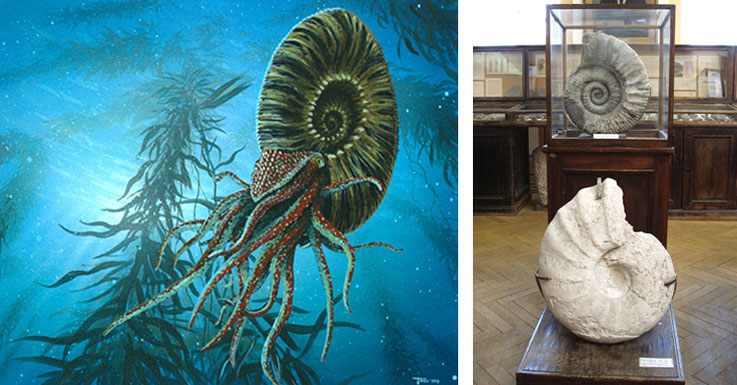AMMONITES are a group of extinct cephalopods that existed from the Devonian of the Paleozoic (400 Ma) to the end of the Cretaceous of the Mesozoic (65 Ma). They are relatives of the living squid and octopus.
The name was proposed by the ancient Roman scientist Pliny the Elder, because the ammonite shell resembles the horn of the Egyptian god Amun, who brings the sun and drives away the darkness.
The ammonite shell was divided by complex partitions into chambers, which were connected by a special tube (siphon). This organ served to fill the chambers with gas or water and ensured the motion, ascent, or immersion of the mollusc. The body of the mollusc was placed in the last chamber, eyes and tentacles were on the head.
Ammonite shells could be monomorphic, spirally twisted, and heteromorphic, with “non-standard” shape, bent at the end with a hook, twisted into a ball, with non-contiguous whorls. They often were decorated with ribs, spikes, and crests of the most varied forms. Shell sizes vary from 0.5 cm to 50-60 cm, but sometimes reach two or more metres in diameter.
Most ammonites were active predators feeding on small invertebrates or fish.
